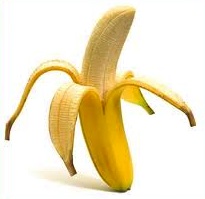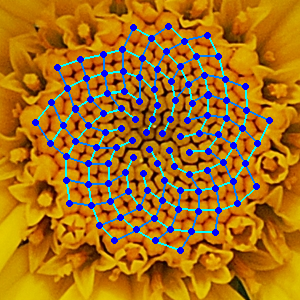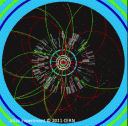I am humbled by having had the opportunity to attend the World Economic Forum in Davos this past week. During my time there, I learned that most of the interesting activity at Davos happens in the coffee lounges and hallways of the Congress Center where the interconnectivity of people causes serendipitous encounters which lead to future collaboration. The dinners and parties are great places for networking and for probing some of the most brilliant minds on topics affecting our times. Most of my friends would not agree with me, but one cannot ignore the amount of quality information being debated at the more formal lecture-type gatherings. I think most people told me they avoided a lot of the lectures and preferred talking to colleagues and new people outside the lecture halls.
The conference is perfect for people who like to learn a little out of everything since the topics of the lectures are as varied as politics of India, Climate Change, Music, Psychology, physics, and many on the current state of the worlds economy. But if what you want is a deep analysis of each of the topics, this is
definitely not the place. During many of the panels, each presenter gets at most 10mins to explain their point of view and by the time everyone has exposed their opinions, the session is almost over. I quickly found that so many things compete for your attention and I for one at times felt guilty that I was
missing some other interesting talk while I sat listening to a different one. A scattered, ADD-like state very akin to what we experience culturally nowadays with a multitude of platforms, friends, jobs, family, trips competing for our attention.
Nevertheless, here are some lectures that I found interesting:
Insights on China addressed the Export Policy, Real Estate, Central government policy-making and private equity of the region.
The Crystal Award Cermony presented an award to Jose Carreras for his work on Leukemia awareness. He said “It is our duty to use our popularity in order to give as much back to society as we receive from it.” Celebrated music director A R Rahman received the Crystal award and Carreras sang the Passion
concert for us. What a treat.
The Opening address was given by Dmitry Medvedev, President of the Russian Federation, who read the peech from his iPad.
I attended a dinner talk on Social Media Addiction with Dan Ariely, Charlie Beckett, Trevor Doughert Reid Hoffman, Diarmuid Martin, Marissa Mayer and Clay Shirky, moderated by Loic LeMeur. Fantatstic table discussions and insights into this phenomenon by simply trying to answer the question of why is
addiction to social media bad? Loic did a wonderful job at moderating the conversations.
Larry Krauss (Physics Professor at Arizona State) and Rolf-Dieter Heuer (Director of CERN) lectured on the Universe, a visual exploration of Astrophysics and Quantum physics. Moderated by Philip Campbell (Editor in Chief of Nature magazine).
I liked George Soros and Christine Lagardes panel on an International Monetary System where they discussed lessons from previous financial crises, enhanced G20 coordination and modalities of international monetary system reform. I missed the talk by pilot/her Chesley B. Sullenberger III who spoke on Leadership under Pressure. I later heard his talk was amazing.
I would have also loved to attend the talk on Science, Discovery and Controversy with Francis Collins, Director of the NIH, Howard Alper Chair and President of Science, Technolloogy and Innovation in Canada, Dan Esty (Yale Professor) Larry Kraus and J. Craig Venter, Founder and Presidnet of the Venter Institute. But it occurred simultaneously with the social media addiction one which ended up being great.
I went to hear Bill Clinton speak, as usual charming the crowds with insights into American politics, society and the economy. I attended a lecture on Global Climate Change from a political perspective with Presidents Jacob Zuma (South Africa), Felipe Calderon (Mexico), Denmark’s Connie Hedegaard, the
EU commissioner for climate action and Costa Rica’s Christiana Figueres who in my opinion was the sharpest of them all. Hedegaard said that China, once an unrepentant polluter opposed to global controls, had joined Europe in deciding to invest in clean fuel technology in order to steal a march on America in a lucrative future market.
I went to a lecture on Smart Mobility that discussed how the integration of information, telecommunication and transportation technology will change our future mobility. I escaped 15 minutes before it ended to attend Ian Bremmers (President of the Eurasia Group) panel on Managing Black Swans and Fat Tails.
Ian did a great job but I thought the panel was too diverse focusing on too many kinds of risk such as financial, energy, environmental, political, sovereign default, etc
so the conversation did not arrive at any significant points.
My friend Itay Talgam gave one of the most fantastic talks by focusing on an analogy between orchestra conductors style and CEO leadership. He showed videos with examples of different styles of conducting an orchestra and its effects on the music and compared them to different business leadership situations.
He was warm, funny and very engaging. Everyone in the audience laughed and even asked for more once the allotted time had finished!
Finally, one of my favorite lectures was on The Science of Emotions which tackled the question on How can we master emotions for a happier, less stressful and more productive life? Tania Singer, a neuroscientist did a superb job at explaining how there are (approximately) three parts of the brain:
incentive focused, non-wanting affiliation focused and threat-focused. She talked about the correlation between different parts of the brain such as the amygdale and different emotions. She discussed experiments with sniffing natural oxytocin and how it causes people to trust and care for one another
more. I cant wait for that drug to be out in the market! The only thing is that the effect only lasts for 20 minutes. Daniel Goleman (Emotional Intelligence) talked about life-work balance and managing emotions in big corporations. There was also a female Buddhist Priest, Roshi Joan Halifax, who discussed the
experiments measuring compassion and happiness in Buddhist monks.
 Did you know that bananas have five sides? Not sure? Pick up a banana and count the sides. Bet you there are five.
Did you know that bananas have five sides? Not sure? Pick up a banana and count the sides. Bet you there are five.
